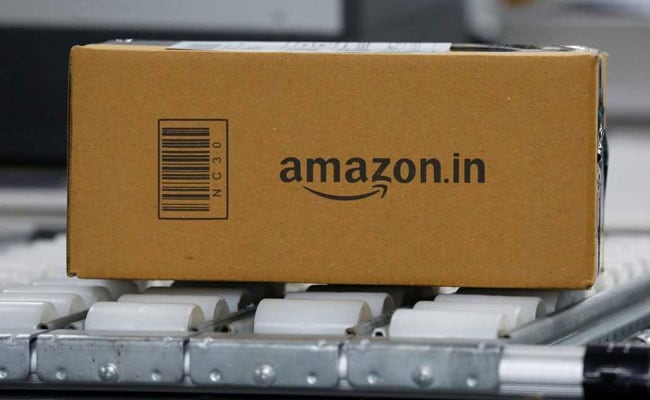[SINGAPORE] Remember when mobile data was rationed by the gigabyte?
Those days are long gone in Singapore, where a fierce price war has changed the price of each gigabyte (GB) from dollars to cents since the mid-2010s – a drop so dramatic that some consumers now use mobile data instead of traditional home broadband.
“It’s fantastic,” says communications strategist Jon Phua, 35. He uses three SIM-only and contract-free phone lines for his mobile devices: one personal, one for work and a third as his home Internet. “Consumers benefit from such competition.”
For Mr Phua, paying S$9.90 a month for 290 GB from Maxx as his “home Wi-Fi” makes sense as he lives alone. His other mobile plans are from M1 and Simba.
Maxx is a Mobile Virtual Network Operator (MVNO) using M1’s mobile network. MVNOs lease network capacity from established telcos rather than build their own infrastructure.
The cheapest no-contract SIM-only plans in 2017 typically cost over S$4 for 1 GB. Today, similar plans from Singapore’s telcos offer gigabytes at under S$0.10 each – a reduction of over 90 per cent, for those looking at the most budget-friendly end of the spectrum of a telco’s services.
BT in your inbox
Start and end each day with the latest news stories and analyses delivered straight to your inbox.
For instance, Singtel-owned MVNO Gomo sells 300 GB for S$18.33. In contrast, Singtel’s cheapest SIM-only and contract-free mobile plan in 2017 offered just 5 GB for S$20.
The state of competition in Singapore means its residents enjoy some of the lowest rates for mobile data in the developed world, according to a 2023 analysis of 5,603 mobile data plans across 237 countries and territories by price comparison site cable.co.uk.
Singapore ranked 59th globally for mobile data affordability, with an average price of US$0.63 or S$0.85 for 1 GB.
While not matching the world’s cheapest markets like Israel (US$0.02) and Italy (US$0.09), the Republic’s prices are far lower than that of Japan (US$3.48) and the United States (US$6).
How did Singapore get here?
All this came about thanks to low-cost manufacturers such as Xiaomi and Huawei, new entrants to Singapore’s telco field and Singaporeans’ increasingly data-hungry ways.
Before 2015, Singapore’s telcos primarily offered mobile data as part of bundled multi-year contracts that included subsidised phones, while locking consumers in.
At the time, competition was over which company could provide the most attractive subsidies for premium phones, according to analyst reports.
SIM-only plans were introduced only in 2015 by Singapore’s three telcos at the time: Singtel, StarHub and M1.
These plans offered lower rates and differentiated themselves by their mobile data and speaking minute allowances. Though such plans had long been standard in other countries, only a minority took them up in Singapore.
Then Chinese smartphone manufacturers Xiaomi and Huawei entered the scene, and made waves by offering phones at far lower rates than market leaders Samsung and Apple. Xiaomi’s first offering to Singapore consumers in 2014 was a S$169 Redmi.
These cheaper phones were a game changer.
By 2018, one in six consumers had signed up for line-only mobile plans instead of locking themselves into a phone contract, according to an Infocomm Media Development Authority (IMDA) survey of 1,500 households.
As Singaporeans increasingly decoupled phone purchases from mobile plans, the arena for competition shifted away from subsidies and towards mobile data.
Back in 2019, Matthew Tan, 45, was quoted in an ST report about the rise of SIM-only plans: “It is like moving to the new electricity vendors. You lose out if you don’t switch.”
Mobile users speaking to ST today say that claim has proven prescient, due to new promotional plans with better data offerings every year and the ease of porting one’s number between providers.
Aditi Brandon, a 26-year-old student whose family used a mobile data plan as their home Internet connection for a year while their home was being renovated, says phone contracts do not suit everyone’s needs.
“My mum switched to SIM-only plans when she felt phones were getting too advanced for her use, while my dad continues with the phone contracts because he wants the shiny new iPhone,” he says.
New challengers
In 2016, Australian telecom company TPG (now Simba) won the right to become Singapore’s fourth telco – the first new entrant in 15 years.
When the company started offering mobile services in 2018, it made an aggressive play for market share by offering a one-year trial plan with unlimited mobile data. While this unlimited data was capped at 2 GB a day, it was also free.
This strategy attracted over 400,000 sign-ups by the trial’s end in 2019, after which the company offered a S$10 contract-free SIM-only plan for 50 GB a month – the most affordable among its competitors at the time.
As at 2025, Simba commands 11 per cent market share, compared with market leader Singtel’s 44 per cent, according to data from industry research firm BMI.
“We had no legacy to contend with and could scale efficiently as demand for our services grew,” Simba’s chief technology officer Benjamin Tan tells ST, noting that his company differentiated itself from competitors with quality offerings at low costs that were simple to understand.
“Many of the features which our competitors charge for, we provide for free,” he adds.
At the same time, MVNOs such as Circles.Life began reshaping customer expectations.
In 2016, the Infocomm Development Authority – the predecessor to today’s IMDA – said it would facilitate MVNOs’ entry to the market.
Circles.Life was the face of this new breed of mobile companies in Singapore, using M1’s network to offer contract-free SIM-only plans for S$28 when it entered the market that same year.
A year later, it upped its offering to a S$28 monthly plan for 6 GB, with an optional S$20 top-up for an additional 20 GB – among the best options at the time for a data-hungry user.
“Our entry into the market catalysed a significant shift, not just in pricing but also in the overall customer experience,” says Fabian Sossa, vice-president of corporate marketing at Circles, the parent company of Circles.Life.
He attributes the increasing affordability of mobile data to technological advances, operational efficiencies and a shift towards the fully digital business model that Circles.Life pioneered in Singapore – eliminating inefficiencies and passing cost savings to customers.
The popularity of these new entrants’ low-cost and lean customer service models even prompted established players to respond with their own budget sub-brands – such as StarHub’s Giga and Singtel’s Gomo – in 2019.
Unlike Circles.Life and MyRepublic, which are independent companies, Gomo and Giga are subsidiaries of Singtel and StarHub.
Dr Eric Kwon, an associate professor at Nanyang Technological University’s Nanyang Business School, says: “IMDA intentionally paved the way for greater competition by granting a licence to the fourth telco, aiming to shake up a market dominated by three players.
“However, the explosive growth of MVNOs and ultra-low pricing was primarily a market-driven outcome that IMDA enabled but did not directly control.”
For some consumers, provider-hopping and maintaining multiple lines have become a way of life.
There were 9,960,700 mobile subscriptions in Singapore at the end of 2024 – which translates to a 165 per cent mobile penetration rate, according to IMDA data.
Imtiaj Alom, a 31-year-old civil servant, has ported his mobile number thrice in the past 12 months, from Simba to Circles.Life to Vivifi (an MVNO leasing Singtel’s network).
He pays S$16 a month for 300 GB of mobile data, but is planning to switch again as the plan changes to 100 GB a month after the promotional 12-month period ends.
“I always go for the cheapest no-contract SIM-only 5G plans I can find,” he says, adding that he also pays for a secondary line from Eight (an MVNO leasing StarHub’s network) due to its roaming data benefits.
Data-hungry Singapore
Media from the late 2000s to early 2010s usually featured protagonists using their phones to call people. By the late 2010s, these protagonists were just as likely to be using their phones to access social media or fire off a search engine query.
This change in consumer patterns can also be seen in Singapore’s skyrocketing appetite for mobile data.
In 2010, Singapore users collectively used 34.4 petabytes of mobile data. One petabyte is equivalent to one million gigabytes.
By 2015 and 2023, this figure had increased to 123.8 petabytes and 1,028.5 petabytes respectively, according to IMDA data.
This explosion in data consumption represented not only changing consumer behaviours, but also shifts in telcos’ business models.
Before the shift to 4G mobile networks, Singapore’s telcos offered 3G mobile data plans that came with a 12 GB usage cap.
These plans were no longer sold after 2012, as telcos were unable to keep up with rising mobile traffic. They began transitioning users towards tiered data plans with the lure of phone subsidies and faster browsing speeds on 4G networks.
As data consumption continued to grow, these telcos have had to reverse course as consumers increasingly chafed at their limited data allowances.
ST reported in 2014 that between 18 and 20 per cent of all tiered data users were paying overage charges for exceeding their bundles – nearly double the rate from the previous year. By 2017, Singtel, StarHub and M1 began offering “unlimited” data options to compete for these high-data users.
Danish Lukawski, 29, founder of a local creative agency, says: “The nature of my job sees me burning through 100 to 200 GB a month, so it’s great that it’s affordable. It’s something I wouldn’t have been able to fathom a few years ago if it wasn’t for the change.”
His work often involves uploading photos and videos while on the go. “If I was still on my old 30 GB and exceeded it, I’d be paying S$10 per gigabyte, which is absolutely ridiculous by today’s standards,” he adds.
Can prices keep falling?
Industry experts are divided on the sustainability of the mobile data price war.
Andrew Kitson, director of technology at industry research firm BMI, argues that such price competition is not sustainable in the long term.
He says building and running mobile networks is expensive, and Singapore’s telcos need growing revenue to pay for these investments.
“The Big Three (Singtel, StarHub and M1) earn income from selling network capacity to the MVNOs, so the impact on their ARPUs (average revenue per user) is offset by income from wholesale agreements,” he says.
“The issue is that this can’t be adequately reflected in ARPUs, so the negative aspects of this narrative tend to be amplified.”
As Singapore’s data usage may be reaching a plateau, this could mean that the big three telcos might stop cutting prices so aggressively, he says. They might also accept that MVNOs have taken a portion of customers they cannot win back.
Kitson expects the average revenue each company makes from each user to fall for the next two to three years before Singtel, StarHub and M1 “concede that further price cuts are not sustainable”.
Dr Kwon concurs with this assessment, saying: “Prices are likely near their lowest point and might stabilise or increase modestly to ensure telcos remain profitable.”
He adds that competition will also move beyond pricing, with telcos likely to compete on superior 5G experiences, bundled digital services, customer experience and network quality.
Dr Simone Santamaria, assistant professor at NUS Business School, notes that the telecommunications industry globally has experienced a longstanding trend of declining prices since 2000 – and Singapore is no exception.
Looking forward, he expects this downward price trend to continue.
He also anticipates more customisation and segmentation, leading to more varied contracts tailored to different groups.
“MVNOs and traditional operators often target different segments of the market. I anticipate this differentiation will persist and potentially intensify,” Dr Santamaria adds.
In Singapore, the price war between telcos has not only meant lower mobile data prices, but also shifts in business practices that were once considered standard in the industry.
For instance, telcos now waive SIM card fees and more roaming data is available by default when purchasing mobile plans.
What next for the mobile market?
Shivendra Singh, managing director of MyRepublic’s mobile business, says the company welcomes the increasing affordability of mobile data as it benefits Singaporeans through greater access to digital experiences.
“While affordability benefits consumers, we also hope to see the market stabilise in a way that ensures sustainability for both customers and operators,” he says.
An M1 spokesperson says the average data usage for its subscribers has grown 62 per cent from January 2023.
“This growth in demand has not translated to higher revenues for telcos,” says the spokesperson, adding that this puts pressure on telcos’ profitability and hinders future infrastructure investments.
To remain competitive, M1 has embraced digital services to reduce overheads and improve operational efficiency.
Circles.Life’s Sossa says the company believes in the long-term sustainability of the telecom sector, which is contingent on continuous innovation, superior customer experiences and diversified revenue streams by building an ecosystem of digital services.
“A race to the bottom on pricing alone risks undermining service quality and stifling innovation,” he adds.
A Singtel spokesperson says that to cater to the evolving needs of customers, the company offers a broad range of brands and plans that feature affordability, flexibility and high-value premium services.
“This includes giving customers the option to choose plans that come with or without a device, contract or SIM. These customisable bundles, which appeal to all our customers regardless of their budget, span mobile, broadband, TV, security, as well as our digital value brand Gomo and multiple MVNO brands,” says the spokesperson.
Similarly, a StarHub spokesperson says the company focuses on differentiating itself through service quality and bundled offerings.
“Our multi-brand, multi-segment strategy serves both price-sensitive and premium customers, driving strong growth in SIM-only subscriptions, particularly from Giga and our MVNO partners.”
For the deal-seeking Singaporean, however, what matters most is how the mobile data price war has created an ever-changing slate of better offerings.
“If we hadn’t had all the new telcos,” says Phua, referring to both fourth telco Simba and new MVNOs, “I don’t think the incumbents would’ve had the pressure to expand their offerings.” THE STRAITS TIMES






